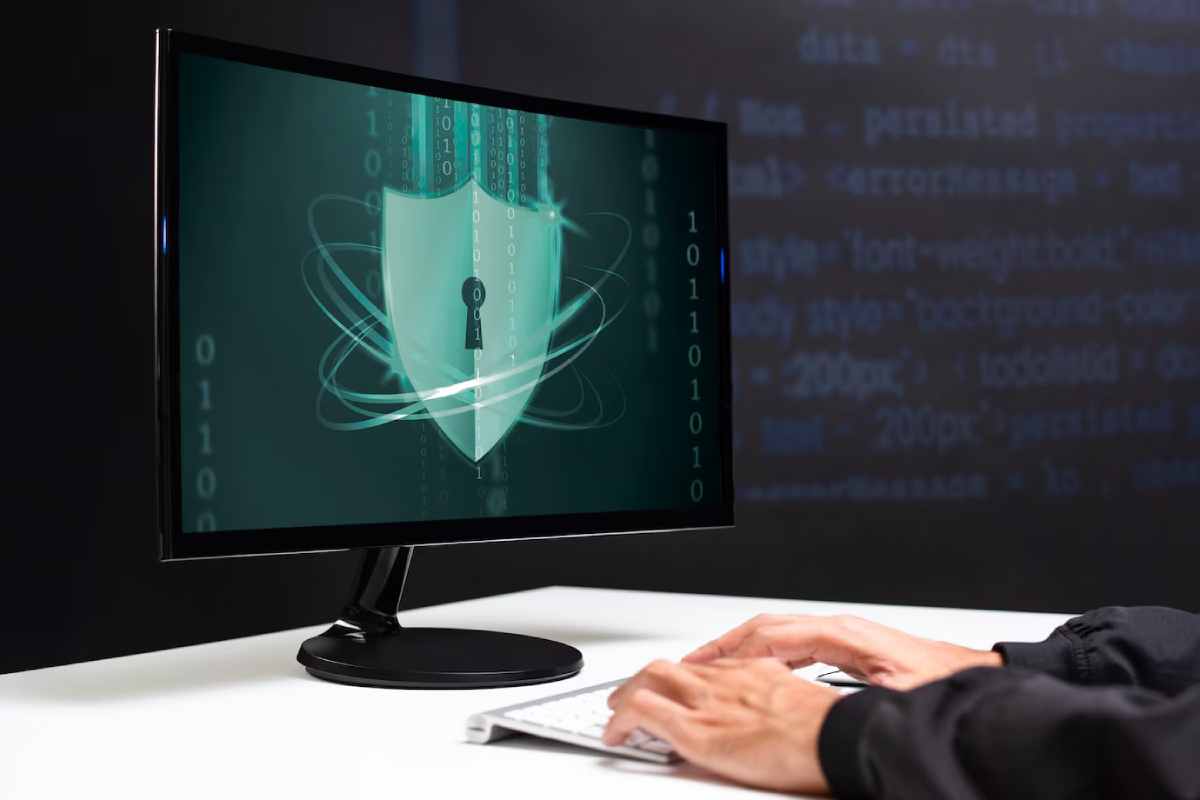Top Cybersecurity Threats and How to Protect Your Data
In today’s digital age, cybersecurity threats are becoming more sophisticated and widespread. With increasing cyber-attacks on individuals and businesses, protecting sensitive data has never been more critical. Whether you’re a casual internet user or a business owner, understanding cybersecurity threats and knowing how to prevent cyber attacks can safeguard your digital life. Understanding Cybersecurity Threats

In today’s digital age, cybersecurity threats are becoming more sophisticated and widespread. With increasing cyber-attacks on individuals and businesses, protecting sensitive data has never been more critical. Whether you’re a casual internet user or a business owner, understanding cybersecurity threats and knowing how to prevent cyber attacks can safeguard your digital life.
Understanding Cybersecurity Threats

Cybersecurity threats are malicious attempts to access, damage or steal sensitive information. From phishing scams to ransomware, cybercriminals can conceal themselves using one of many tactics and take advantage of system and network vulnerabilities. Financial losses, identity theft, and reputational damage are among the consequences of these threats.
In this article, we will review the most prevalent cybersecurity threats and offer practical measures to secure data.
The Most Common Cybersecurity Threats

1. Phishing Attacks
Phishing is one of the most common and deceptive types of cybersecurity threats. Attackers take on the identity of a genuine organisation through email, messages, or phone calls and try to steal sensitive information from people, such as their login credentials and financials.
How to Protect Yourself:
- Never click on a link without checking the sender’s email address first.
- Do not provide personal information through unsolicited and suspicious emails.
- There are also things that can be done to keep yourself secure, such as setting up multi-factor authentication.
- Use tools to filter against phishing e-mails.
2. Malware and Ransomware
The term “malware,” short for malicious software, refers to viruses, worms, spyware, and the like that are meant to damage or gain unauthorised access to systems. Ransomware is malicious software that encrypts data and requests payment for its decryption.
How to Prevent Malware Attacks:
- Not effective, install a good antivirus, and anti-malware software.
- Make sure your operating system and applications are always up to date.
- Do not download software from untrusted websites.
- Back up critical data periodically to an offline sources/cloud storage service.
3. Man-in-the-Middle (MITM) Attacks
MITM attacks occur when a cybercriminal intercepts communication between two parties, often on unsecured Wi-Fi networks. This allows attackers to steal sensitive information like login credentials and credit card details.
How to Stay Secure:
- Avoid using public Wi-Fi for transactions or sensitive communications.
- Use a Virtual Private Network (VPN) to encrypt online activity.
- Ensure websites use HTTPS encryption before entering personal details.
4. Denial-of-Service (DoS) and Distributed Denial-of-Service (DDoS) Attacks
DoS and DDoS attacks flood a website or network with excessive traffic, causing disruptions and downtime. These attacks often target businesses, online services, and government websites.
Preventative Measures:
- Use firewalls and intrusion detection systems to monitor traffic.
- Employ rate limiting and load balancing to handle traffic spikes.
- Work with your hosting provider to implement DDoS protection.
5. Insider Threats
Not all cybersecurity threats come from external hackers. Employees, contractors, or business associates with access to sensitive information can pose a risk, whether intentionally or unintentionally.
How to Mitigate Insider Threats:
- Implement strict access controls based on job roles.
- Conduct regular cybersecurity training for employees.
- Monitor user activity for suspicious behaviour.
- Enforce a strong offboarding process to revoke access when an employee leaves.
6. SQL Injection Attacks
SQL injection attacks occur when attackers manipulate database queries by injecting malicious code. This can lead to unauthorised access, data breaches, and data loss.
Protection Strategies:
- Use parameterised queries and input validation.
- Keep database systems updated with security patches.
- Employ web application firewalls (WAF) to filter malicious requests.
7. Zero-Day Exploits
Zero-day vulnerabilities refer to software security flaws that are unknown to developers and unpatched, making them prime targets for cybercriminals.
Defensive Measures:
- Regularly update software and firmware.
- Use security solutions with threat intelligence capabilities.
- Apply patches immediately once they are released.
Best Practices to Enhance Data Security
1. Use Strong and Unique Passwords
Weak passwords are an easy target for cybercriminals. Using strong and unique passwords for different accounts minimises the risk of credential theft.
Tips:
- Use a mix of uppercase, lowercase, numbers, and special characters.
- Avoid using personal information, such as birthdays, in passwords.
- Utilise a password manager to store and generate secure passwords.
2. Enable Multi-Factor Authentication (MFA)
MFA adds an extra layer of security by requiring additional verification beyond a password.
Benefits of MFA:
- Reduces the risk of account takeovers.
- Enhances security even if passwords are compromised.
- Common MFA methods include SMS codes, authentication apps, and biometric verification.
3. Keep Software and Systems Updated
Cybercriminals prey on known, aged software.
Steps to Stay Updated:
- Set operating systems and software to update automatically.
- Stay on top of security patches and install them as soon as they are available.
- For enterprises, use a centrally-managed patch management system.
4. Secure Your Network
A secure network prevents unauthorised access and data breaches.
Network Security Tips:
- Use strong encryption protocols for Wi-Fi (e.g., WPA3).
- Change default router passwords and disable remote management.
- Implement a firewall to filter incoming and outgoing traffic.
5. Educate Yourself and Your Employees
Human error is one of the leading causes of cyber incidents. Continuous cybersecurity awareness is crucial.
How to Foster a Security-Conscious Culture:
- Conduct regular cybersecurity training sessions.
- Simulate phishing attacks to test employee responses.
- Encourage reporting of suspicious activities.
The Future of Cybersecurity
As technology advances, so do cybersecurity threats. New threats, including AI-driven cyber assaults and quantum computing weaknesses, underscore the importance of proactive security strategies. Keeping abreast of these threats and developments will allow individuals and organisations to improve their barriers.
Safeguard Your Data Today!

The world today is thriving with cyber threats. Cybercriminals are constantly creating new techniques to take advantage of unsuspecting targets, from phishing attacks to ransomware. However, by understanding all the data and threats it presents, you can introduce more robust security. This can be done to mitigate your risk of cyber-attacks and protect your data heavily.
Strong passwords, multi-factor authentication, software updates, and employee education are key investments. They can help in protecting your personal and business information. Keep your eyes open, stay in the know, and make cybersecurity a priority. This is important so that you can protect your digital assets securely.
Are you taking the necessary steps to protect your data? Implement these cybersecurity practices today and stay one step ahead of cyber threats.